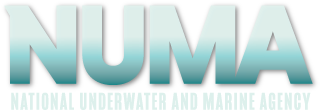Wreckmaster Articles
The Last Whaler
The present day discovery of a 207-year-old whaling vessel appears to have renewed interest in an industry that thrived in the 18th and 19th centuries. Kerosene was yet to be invented and oil extracted from “monsters of the deep” was in demand worldwide. About 15 years before author Herman Melville introduced the world to his captivating book, Moby Dick, the Industry was a Massachusetts whaling ship that sank near the mouth of the Mississippi River.
No Knights at This Castle
There are lots of idioms floating around, some trite and others true, such as: “haste makes waste; fit as a fiddle, no pain no gain,” etc. The expression, “Bad things come in threes,” appeared years ago in the case of the SS Morro Castle, a ship whose story is one of the strangest in maritime history.
Political Posturing Looms After Lusitania Loss
When a ship sinks, there’s usually lots of mass media hype that eventually calms down and becomes simple maritime history. But sometimes the vessel sails back into the limelight as disputes arise. Insurance companies for instance may claim the shipwreck from salvors or they might renege on payment to the owners. If a captain survives, he could be questioned for a bad decision which led to the tragedy.
SS Laurentic Shelters Gold Beneath the Clutter
When a British troop and cargo transport struck two mines off the Irish coast during WWI, United Kingdom Royal Navy warships converged on the site and never left. Onlookers were curious. The war was three years running and this wasn’t the first time Allied vessels had been struck by a torpedo or hit by a mine laid down by German U-boats
Steven Spielberg’s Shipwreck Hoax
When American film director, producer and screen writer Steven Spielberg used the name of an authentic shipwreck in one of his award winning films, he opened a puzzling can of worms. The three time academy award winner took the name of a real shipwreck: the SS Cotopaxi and made it a focus of interest in his 1977 Sci-fi hit, “Close Encounters of the Third Kind.” A major subject in the plot, the ship was found in the Gobi Desert abandoned by extraterrestrials.
Sub Sinks Ship, Ships Sink Sub
German U-boats were very successful during WWI, sinking many British merchant ships with 38 submarines at the start of the war, 1914, and 334 by the end of it, 1918. The United States was slow entering the fray, but moved faster when the liner RMS Lusitania was torpedoed and sunk off the Southwest coast of Ireland. Of the 1,195 fatalities, 125 were American citizens. Soon after the disaster, U-boats were sinking American merchant vessels.
One of the Last Forays of Civil War Sinks Beautiful Ship
Close to 300 passengers and crew, sailing aboard the clipper ship Adriatic in August, 1864, thought their voyage from London, England, to New York City would be a breeze. Little did they know that an untimely encounter with the CSS Tallahassee, a Confederate coastal raider, would bring imprisonment and loss of their ship which carried supplies for the Union cause.
The U-480: When the Hunter Became the Hunted
The British were sick of the death and destruction suffered when four of their ships were
sunk by a German U-boat in August, 1944. They had already lost other vessels as Allies
of the United States in WWII, but this was different. They had been hoodwinked by a
German innovation.
The SS Coimbra: Still Active Lest We Forget
When Bob Allen gave a talk before a Long Island, New York, dive club, he began with: “We owe our lives and allegiance to those who fought for and won freedom from tyranny years ago. Lest we forget, there are still reminders of the conflict and our victories over Germany and Japan. One of the memories is sunk right here off our Long Island shore, continually reminding us of her role in WWII.”
The SB Pulaski: A Story of Tragedy, Romance and Treasure
Is there a word or phrase for happiness that occurs after a tragic experience? “Every cloud has a silver lining,” “it was bitter sweet,” “comfort in time of distress,” might apply. Yet, when half of the 200 passengers and crew are lost at sea in a freak accident, it’s difficult to find happiness of any kind. But the aftermath from the tragedy of the SB Pulaski, a passenger/freight steamboat that sank off the coast of North Caroline, June, 1838, kept it in the news in a good way.
All Rights Reserved © | National Underwater and Marine Agency
All Rights Reserved © | National Underwater and Marine Agency
Web Design by Floyd Dog Design
Web Design by Floyd Dog Design
